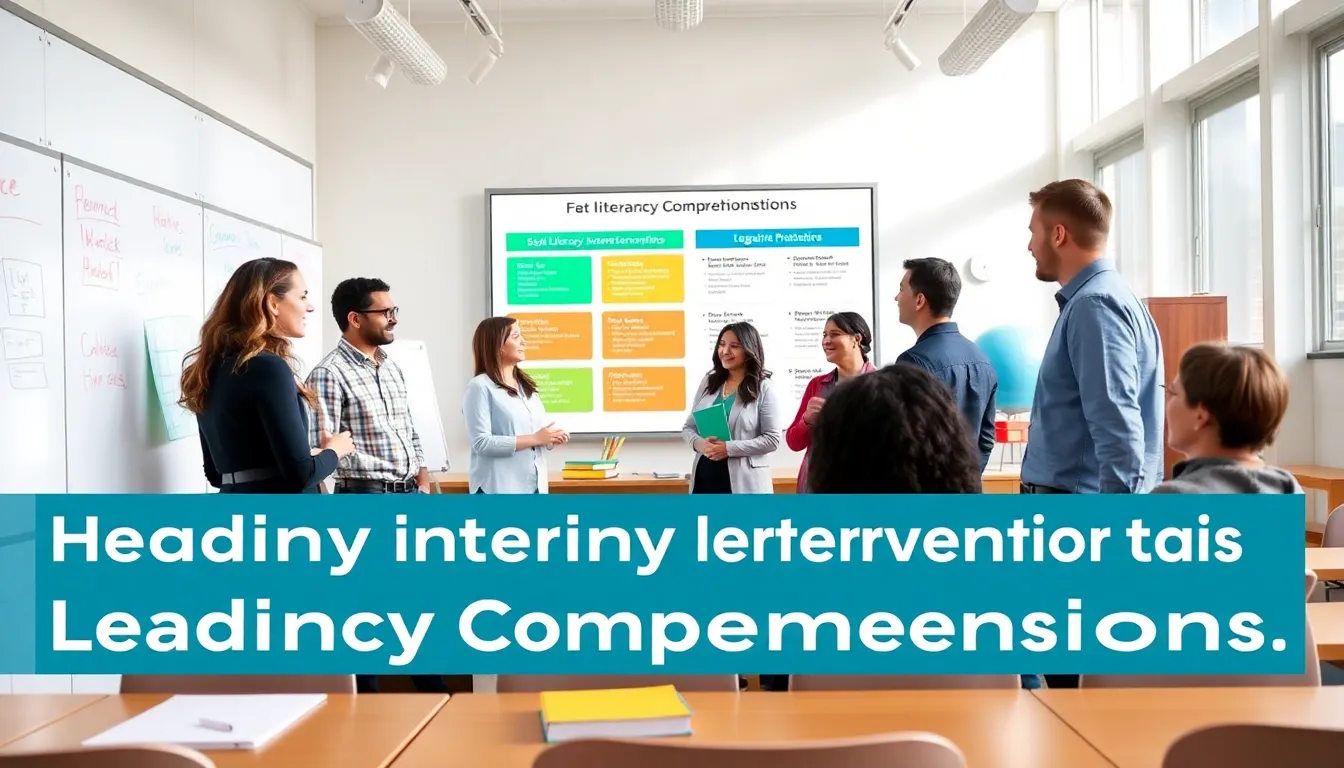Reading comprehension isn’t just about getting through those pages: it’s about understanding and connecting with the text. Picture this: your child is plowing through a book, but all they grasp is the cover illustration. It’s a bit like driving through a beautiful landscape with your eyes glued to the road, missed opportunities all around. Thankfully, literacy interventions for reading comprehension can turn that around, helping learners not just read, but truly engage. Let’s jump into how these interventions can make reading a delightful adventure rather than a daunting chore.
Table of Contents
ToggleUnderstanding Reading Comprehension

Reading comprehension encompasses the ability to process and understand the meaning of text.
It involves several cognitive processes, including decoding words, interpreting sentences, and drawing inferences from context. When readers encounter a passage, they don’t merely read the words: they engage with the material to extract meaning.
Aspects such as background knowledge and vocabulary also play crucial roles. If one doesn’t know what certain words mean or lacks context, understanding becomes a chore.
Comprehension might feel like a puzzle, and literacy interventions aim to provide the missing pieces, ensuring learners see the full picture.
Key Components of Effective Literacy Interventions
Effective literacy interventions hinge on several vital components. First off, systematic instruction is crucial. Readers benefit from a structured approach that explicitly teaches skills rather than leaving them to figure things out accidentally.
Next, consider direct and explicit instruction in reading strategies, these strategies are almost like tools in a toolbox, allowing readers to tackle various texts confidently. Training students to predict, question, clarify, and summarize is imperative.
Also, integrating engaging materials is essential. The texts should resonate with learners’ interests, making them more willing to engage.
Finally, continuous monitoring and feedback foster improvement. When educators assess students’ progress, they can adjust interventions as needed, ensuring every learner is on the path to success.
Types of Literacy Interventions
Various types of literacy interventions exist, tailored to meet diverse student needs. Here are a few standout options:
- Phonics-based Interventions: These programs focus on teaching the relationship between sounds and letters, providing a solid foundation for reading.
- Fluency Programs: These interventions emphasize the importance of reading speed and accuracy, which are critical for overall comprehension. Activities often include repeated readings and performance-based activities.
- Comprehension Strategy Instruction: This method focuses explicitly on teaching students how to understand and analyze texts. It may include techniques like reciprocal teaching or collaborative learning exercises.
- Multisensory Approaches: These interventions engage multiple senses (visual, auditory, kinesthetic) to reinforce learning. This approach can be especially helpful for struggling readers, making learning both fun and effective.
Strategies for Implementing Literacy Interventions
Implementing literacy interventions requires methodical planning and execution. First and foremost, identify specific needs and tailor the intervention accordingly. A one-size-fits-all approach rarely yields positive outcomes.
Next, create a conducive learning environment. Ensure students feel safe and supported, as confidence often leads to better engagement. Incorporate various tools like visual aids, graphic organizers, and technology to enhance the learning experience.
Engaging parents and caregivers can also boost literacy efforts. Share strategies and resources that they can use at home. Finally, encourage a growth mindset, instill the belief that abilities can improve with effort and perseverance. This mindset fosters resilience, vital for tackling reading challenges.
Measuring the Effectiveness of Interventions
Tracking the success of literacy interventions is key to ensuring they are effective. One effective method involves using pre- and post-intervention assessments to gauge improvements in reading comprehension.
Besides, regular progress monitoring can provide insight into how well students are responding to the interventions.
Utilizing metrics such as fluency rates, comprehension levels, and even student self-reports can paint a complete picture of progress. Keep in mind that qualitative feedback also matters. Gather insights from students about their experiences, making adjustments as necessary. Continual reassessment ensures that the interventions remain relevant and effective.
Challenges in Literacy Interventions
Implementing literacy interventions isn’t always a walk in the park. Several challenges can arise, including resource constraints. Educators may find it difficult to gain access to necessary materials or training, potentially hampering intervention effectiveness.
Also, varied student backgrounds complicate interventions. A classroom may include struggling readers alongside more advanced students, making it tough to cater to everyone’s needs simultaneously.
Plus, educator training is vital. If teachers do not feel equipped to carry out interventions, their effectiveness may diminish.
Finally, maintaining student motivation presents a challenge. Some learners may resist interventions, viewing them as punitive rather than supportive. Overcoming these barriers requires creativity, collaboration, and ongoing commitment.



